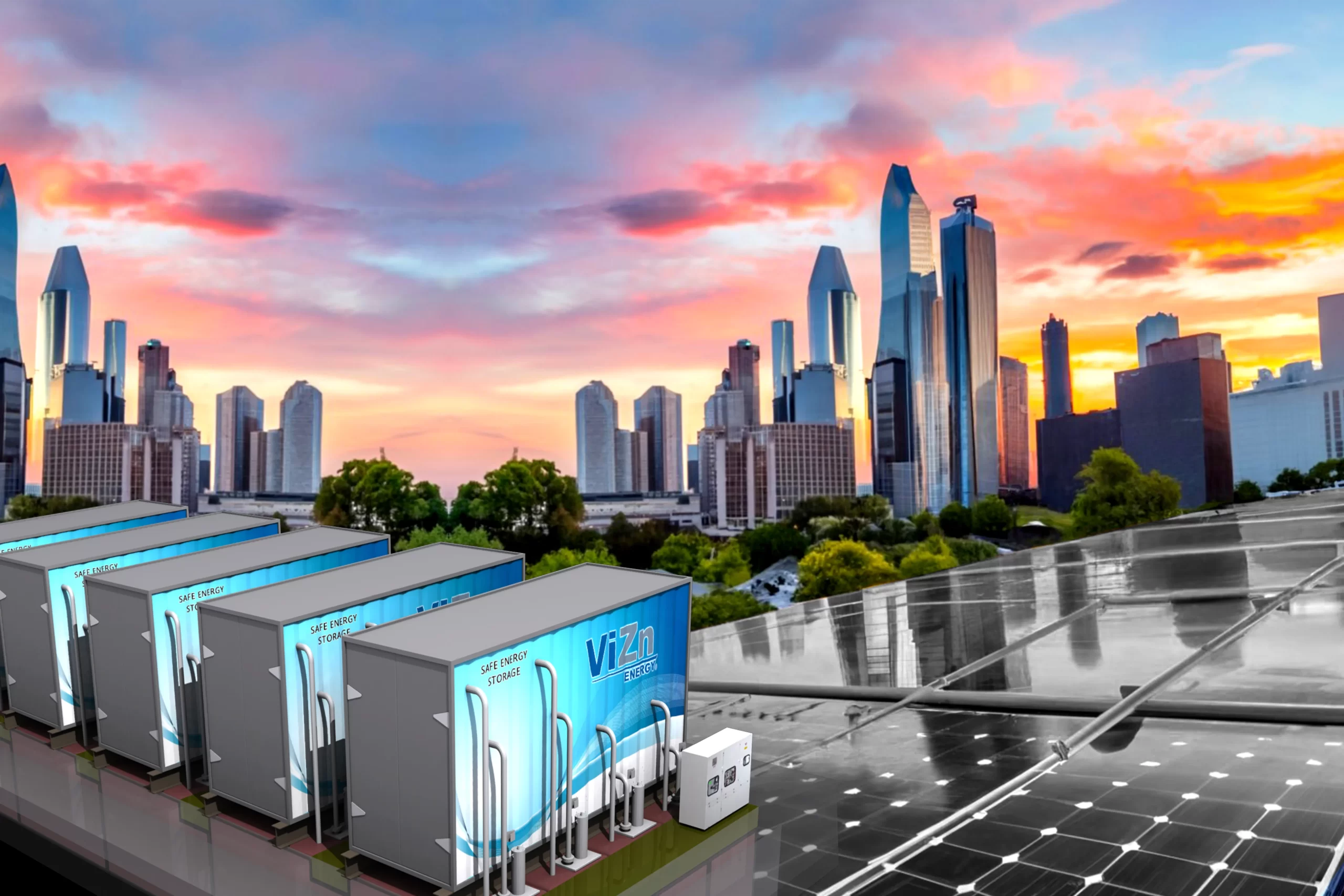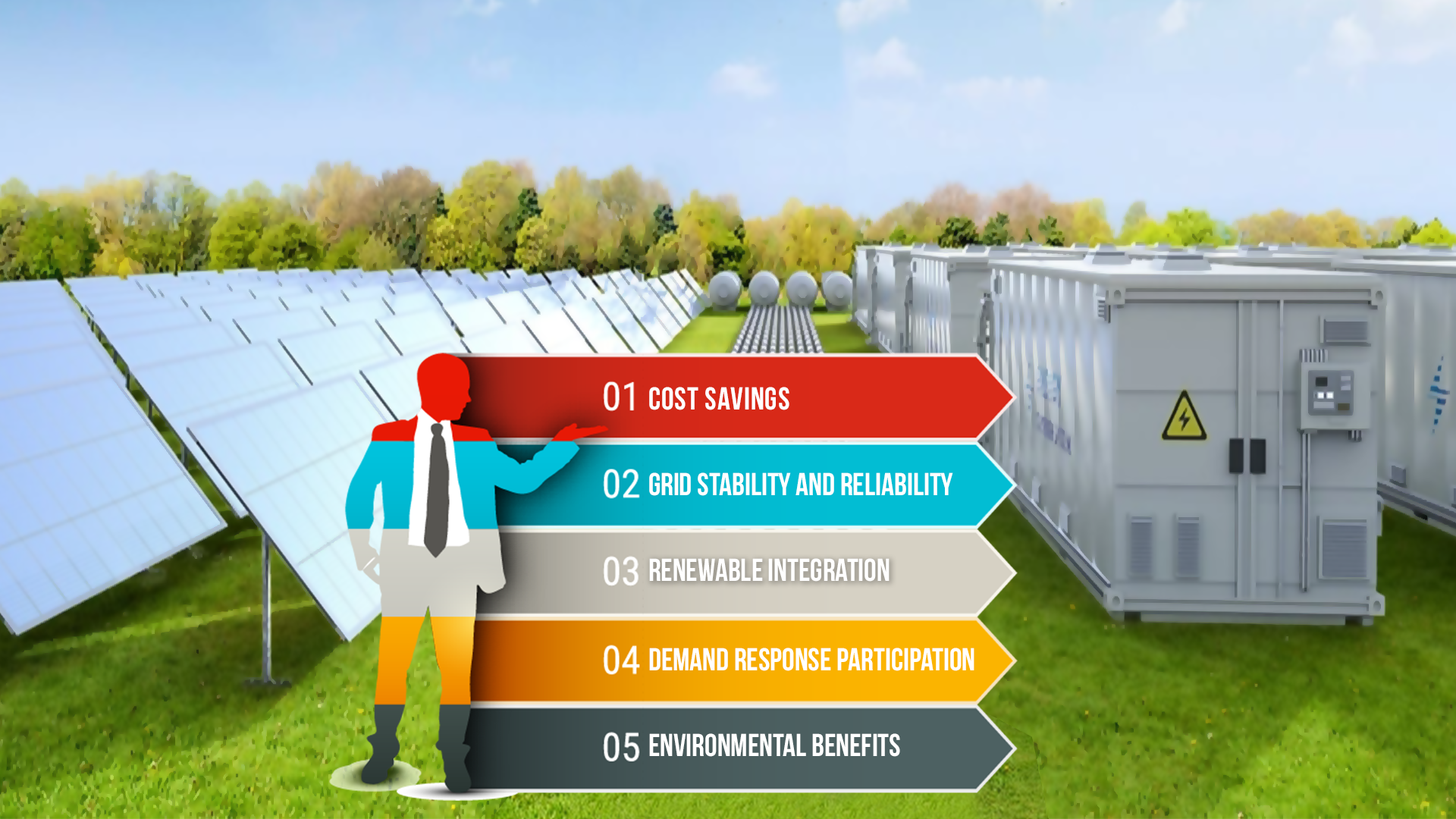- Published On:
Energy Storage for Businesses: What You Need To Know

Understanding Energy Storage
Energy storage, simply put, means capturing and storing energy for later use. Businesses can use an energy storage system to store excess energy produced by a renewable energy system, or to even buy electricity off the grid and store it when demand is low and prices are low. Then the business can use it or even sell it back to the grid when demand and prices are high, thereby optimizing energy storage system usage to reduce utility expenses.
Energy storage systems for businesses are most commonly batteries. But there are other forms of energy storage. They include flywheels, compressed air storage, and pumped hydro storage. Battery storage is the most flexible because of its versatility, portability, scalability, and continually declining costs.
Top 5 Benefits of Energy Storage for Businesses
1. Cost Savings:
In certain markets businesses can benefit from peak demand shaving and time-of-use pricing when they use energy storage. They can reduce their electricity costs by storing energy during off-peak hours when rates are cheaper and using stored energy during peak demand periods when grid electric prices are higher. This helps them avoid peak use demand charges, which are sometimes higher for those businesses that use more energy.
2. Grid Reliance and Energy Stability:
Businesses can use energy storage to boost their energy stability and reliance on the grid during power outages or brownouts. During a grid outage, these systems supply backup power to maintain operations and protect essential equipment and procedures.3. Renewable Integration:
Utilizing energy storage helps a company to maximize the benefits of renewable energy sources, such as solar and wind power. A company that stores extra energy produced during times of renewable output can use that energy when it’s most needed—as in during peak pricing hours or during a blackout. This also maximizes the use of clean energy while reducing dependency on fossil fuels that still power much of the electric grid.4. Demand Response Participation:
Energy storage allows businesses to participate in demand response programs where available. Under these programs businesses can help provide grid stability and generate income by modifying their energy consumption habits in response to market signals or grid conditions. They can choose to reduce their use or send power back to the grid to generate income or offset their use of grid power at other times.5. Environmental Benefits:
Businesses can reduce their environmental impact and carbon footprint by implementing energy storage and reduce their use of fossil fuels. With energy storage, greater use of renewable energy, and less reliance on fossil fuels, businesses help foster sustainability and mitigate climate change. Energy storage also minimizes emissions associated with backup power generation, either by the business, or when the utility must run dirtier backup power stations to meet demand.Energy Storage Technologies
- Lithium-Ion Batteries: Widely used in everything from smart devices to electric vehicles and energy storage systems for data farms and utility substations, lithium-ion batteries offer high energy density, fast response times, and long cycle life.
- Flow Batteries: Flow batteries are generally used in applications where energy density doesn’t matter as much and may become more popular for businesses in the future. They store energy in liquid electrolyte solutions that are cycled by a pump. They offer long-duration storage, and potentially lower costs per kilowatt-hour.

- Flywheels: Flywheel systems store kinetic energy in a rotating mass, providing rapid response times and high-power density for short-duration applications.
- Compressed Air Energy Storage (CAES): CAES systems compress air in underground caverns or containers to store energy, offering large-scale, long-duration storage capabilities. CAES is a potential energy storage solution for large buildings with high energy needs, like data farms, that we may see grow in coming years.
- Pumped Hydro Storage: Pumped hydro storage involves pumping water to higher elevations during off-peak hours and releasing it through turbines during peak demand periods.
What are the benefits of energy storage for businesses?
Energy storage is essential to the shift away from fossil fuels across all sectors of the economy. Integrating energy storage alongside renewable energy installations can help businesses control their energy spending more and help stabilize the electric grid, while reducing their overall electric bills.
Energy storage is even more important for utility-scale installations, which can use energy storage facilities to add in on-demand power when solar or wind aren’t generating without resorting to firing up old, more polluting generators. However, as more businesses, municipalities, and utilities across the United States integrate energy storage, it can also help lessen the need for utilities to add more energy storage in.
Protection against power outages
Electric outages are happening more often because of extreme weather events. Such events are happening across the country and affect a business’s bottom line.
Wages, inventories, output, and sales—all can severely decline each time the grid goes down. For large companies, the cost of an outage can reach millions of dollars for every hour of downtime.
To overcome the perils of climate change causing blackouts, businesses should develop and integrate an energy resilience plan. Battery storage can be an essential part of that approach. Especially when companies combine energy storage with PV systems, which allows them to continue to run their business during an unplanned or scheduled power outage.
Lowers energy costs
With energy storage a company can choose the best times to buy energy to store or store it from their solar PV system. Energy storage boosts savings by keeping that cheap energy on hand to use when demand is highest and rates are and demand charges are higher. One article from Utility Dive, for instance, noted that demand charges could be as high as $143 per kilowatt used though most are between $2 per kW and $15 per kW.
Peak shaving can reduce overall expenses for companies and help them control demand overall by reducing grid energy use during peak demand periods. However, that can lower production during peak work hours.
Energy storage allows a business to adjust where they source their energy from, always and when—allowing it to always source it from the cheapest available source. This helps reduce energy costs without reducing production during peak hours.
Customers can more easily take part in available distributed resource programs with energy storage, by reducing their impact on the grid or serving as a distributed resource when needed they can reduce other charges and even make money back on energy they sell back to the grid.
Improves the grid
Unfortunately, there are times when peak demand and peak generation from renewables don’t match and Utilities need to look for other sources of electricity—often from dirty fossil fuel generators, which they don’t usually use because it costs more to operate them.
More energy storage at commercial sites will and is reducing the need to run those dirty power plants. By storing extra energy, and using it or sending it to the grid when it needs additional energy sources on demand helps balance distribution without using those other generators.
Future Outlook:
The future of energy storage for businesses looks promising, driven by advancements in solar technology, declining costs, and increasing demand for clean energy solutions. Energy storage will play a crucial role in moving towards a more resilient, sustainable energy ecosystem as renewable energy use continues to rise and grid modernization efforts accelerate.
We’re likely to see more innovations in solid-state batteries, artificial intelligence-driven energy management systems, and novel storage chemistries. These should help lower energy storage costs and make implementing it easier.
To learn how your company can benefit from energy storage and renewable energy, check out how Solar SME can help you or get a FREE Estimate with our smart solar calculator NOW!
Related Articles:
With the rising cost of electricity, many homeowners are considering solar energy as a viable solution. Solar panels have become a popular choice for generating clean energy.
With frequent long power outages in the United States due to bad weather conditions and grid failures, homeowners are now seeking solutions to protect themselves and reduce their reliance on the power grid.
A solar battery or generator? Which option is suitable to deal with power outages? This is a common concern of people around the US these days.



